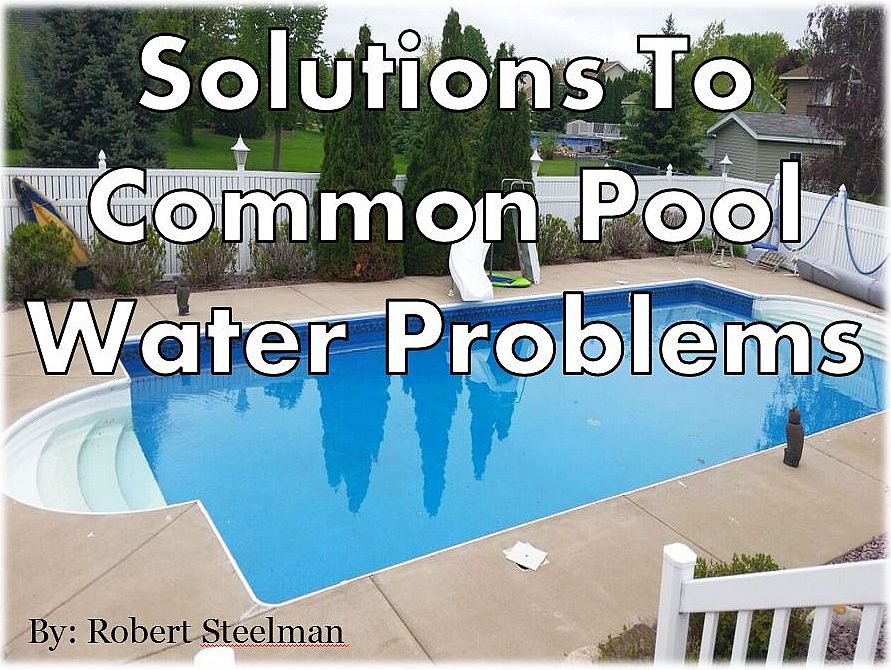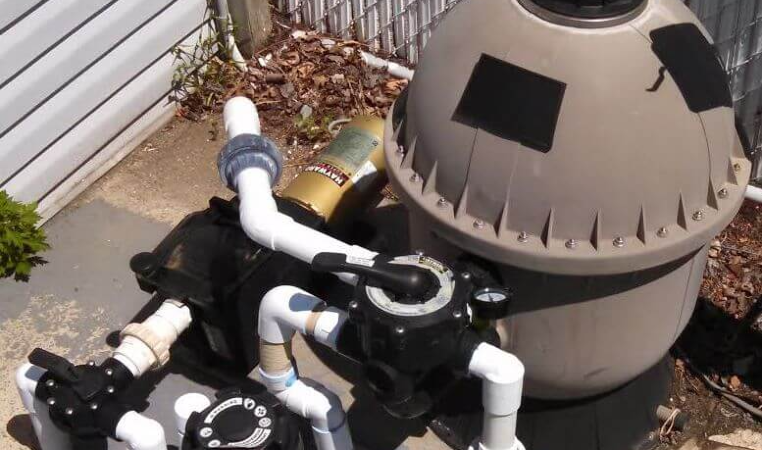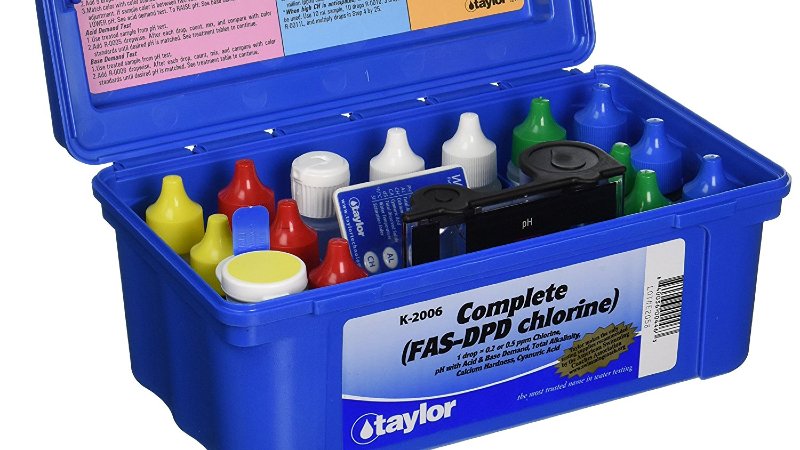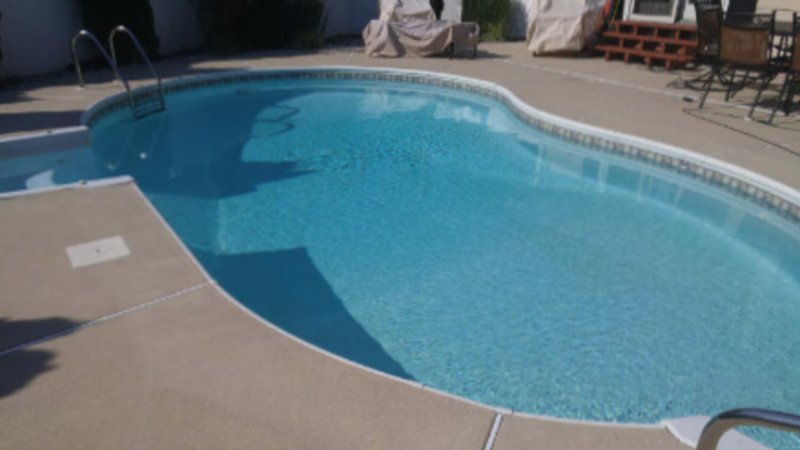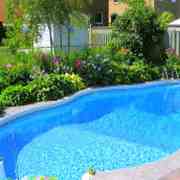Why Buying Fiberglass Inground Pools Is A Good Choice
Want a great pool that can last for years? Is comfort and affordability on your list? How about getting your pool installed in a weekend? Fiberglass inground pools might sound like a great dal. Fiberglass pool owners have cheered about the smooth finish and the decrease in their chemical use compared to concrete pools.
These owners also like the fact their fiberglass inground swimming pools require no acid washing and are pretty good against swimming pool algae. Some may say that their pools are healthier than their concrete cousins.
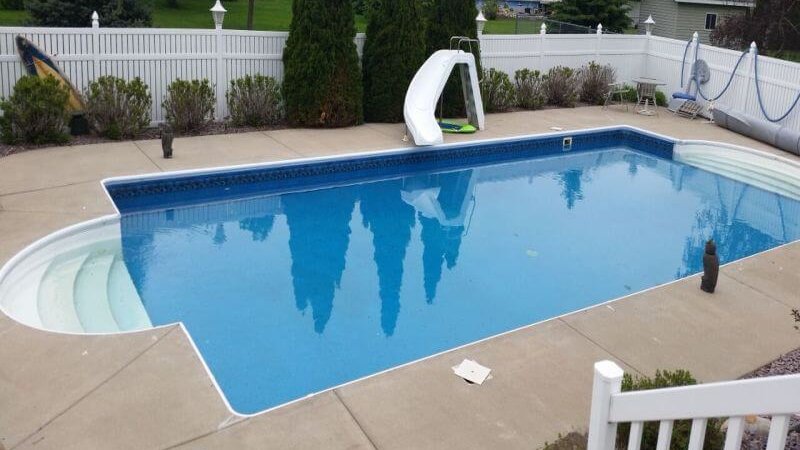
What Are Fiberglass Inground Pools?
A fiberglass pool is simply a structure made entirely of fiberglass materials, and is similar to your bathtub or shower. The pool shell is about 3/8 inches thick. We can compare this to a concrete inground pool which is normally 5-6 inches thick, and a vinyl liner inground pool where the walls are about 4 inches thick. Don't let this throw you off. Fiberglass inground pools are tough and stand withstand years and years of use.
How Are Fiberglass Pools Made?
Fiberglass inground pools are constructed from an actual mold and reinforced with steel bars to make them more durable. All this is done in a climate controlled factory. The mold can be underneath and then the pool shell is placed on top of that, or the construction of a fiberglass pool can have the shell on the inside of a mold.
Fiberglass pool should be made very carefully, as they will certainly be holding thousands of pounds of water. A gelcoat is sprayed into the mold, and then resins are added to the chopped fiberglass. Stress points are checked and strengthened, the walls are honeycombed to increase their durability, and finally a layer of polyester resin is added.
The mold is then cured, the shell is removed from the mold and excess material is carefully trimmed away, and finally a quality check is performed on the shell.
Two important parts of fiberglass inground pools are:
Resin
Fiberglass inground pools use chopped fiberglass which is mixed with a vinyl ester resin or polyester resin. Both resins work as a glue, or adhesive, that binds the fiberglass to itself and to the surrounding layers of the pool shell. Some fiberglass pool manufacturers will use both kinds of resin. The first layer is the waterproof vinyl ester resin, then the polyester resin is added to finish off the process.
When looking at fiberglass inground pools, it's important to get a pool that has the first layer of vinyl ester resin as this is the waterproofing agent for the pool.
Gelcoat
The gelcoat is on the inside of the fiberglass pool which is called the finish, and is what you see when you're looking at the pool. As its name implies, it's a gel and then it hardens through a process of chemical bonding. This process creates a beautiful and durable finish which make maintenance easy.
Are Fiberglass Pools A Good Deal For Me?
Everyone loves a good deal, but let's not be "penny wise and pound foolish" or naïve. Each type of pool has their own sets of pros and cons. No pool type is perfect all the way across the board. When dealing with fiberglass pool manufacturers there are a few areas you'll want to keep in mind:
- The reputation of the swimming pool dealer
- Who is working for them i.e...employees and any sub-contractors
- The materials used in making the pool and the type of coating
- Manufacture process of the molds
- Quality control measures
- The installation process
- What warranty and/or guarantee do the fiberglass pool manufactures make?
- Experience at swimming pool restoration and pool refinishing?
- Experience at contemporary and/or classic pool and spa upgrades?
Benefits Of Fiberglass Inground Pools
When you're considering the purchase of an inground swimming pool, there are many factors to consider. Will you go with fiberglass, concrete, or vinyl liner? So let's discuss some benefits of owning an inground fiberglass swimming pool.
1. Fast and Easy Installation
The weather needs to be right when installing a vinyl liner due to the fact the ambient temperature has to be a certain temperature for the liner to properly fit and not wrinkle when installed. And plaster pools cannot be too hot as it may cause the plaster to crack. A fiberglass pool is created in a controlled environment and can be installed the same day.
2. Low Maintenance
Fiberglass pools are easy to maintain and the dreaded black algae is rare. They're also easier on chemicals so you'll actually use less of them to maintain the proper chemistry.
3. No Liner or Chlorine/Acid Wash
Most inground pools with vinyl liners and above ground pools normally need a new liner every 7 - 10 years. This can be more often if you live in a hotter climate. Plaster and concrete pools will sometimes need to be either chlorine or acid washed, depending upon the situation. At about the 15 - 20 year mark they might need to be either re-plastered or painted.
Manufacturers are always making improvements. A fiberglass pool kit is made in a factory controlled environment which improves the efficiency of the pool and reduces your costs.
4. Attractive
Long gone are the days where it looks like you have a simply bathtub in your backyard. Modern fiberglass inground pools can allow you to customize your pool with spas, tanning ledges, ceramic tiles, and colored lighting, just to name a few features.
What's The Cost Of A New Fiberglass Pool?
The price is what you pay for the installation and all the goodies. The cost is how much you're paying per month and year to maintain and keep your new fiberglass pool. They're known for their easy up-keep and maintenance is a breeze. Fiberglass pools also use less chemicals than plaster and vinyl pools.
The initial price of a plaster or vinyl pool is pretty comparable at about $1 per 1 gallon of pool water. This means a 25,000 gallon pool will be approximately $25,000. Fiberglass inground pool have a slightly higher initial price and you can expect to pay about $1.25 per gallon of pool water. This equates to about $31,250 for the entire installation of a 25,000 pool.
It really depends on what you want and what "add-ons" are right for your pool, backyard, and budget. Here's a list of things that future pool owners might consider when considering swimming pools dealers:
- Waterline tile
- Colored finish
- Pool lights
- Concrete deck
- Decorative rocks
- Pool slides
- Salt water swimming pool
- Pool safety cover
- Diving board
- Ladders
- Automatic vacuums
- Adjacent hot tub
Final Thoughts On Fiberglass Inground Pools
If you're the "do-it-yourselfer" you can probably get away with installation around $10,000 - $15,000. If you plan on having your contractor do everything and want everything above, you could be looking in the ball-park of $45,000 - $60,000 for a full experience. Fiberglass inground pools are usually more expensive, upfront, than regular concrete pools but can save you money in the long run.
As was previously mentioned, they tend to use less chemicals, don't need to be re-plastered every 8 - 10 years or so, no swimming pool paint to buy, and there's no need to buy any vinyl liners. Clearly there are many reasons to consider fiberglass inground pools. Just remember to get one that fits your budget and ask the right questions.
What Other Visitors Have Said
Click below to see contributions from other visitors to this page...
Gel Coat Problems & Cracks In A Fiberglass Pool 




I was looking through your website and was hoping you could help me. We just had a fiberglass pool installed in Michigan. When they were installing the …
Purchasing A Pool Not rated yet
Reading the questions from others about there fiberglass pool kind of scares me. I'm looking into purchasing a pool and I'm not sure if concrete, liner …
